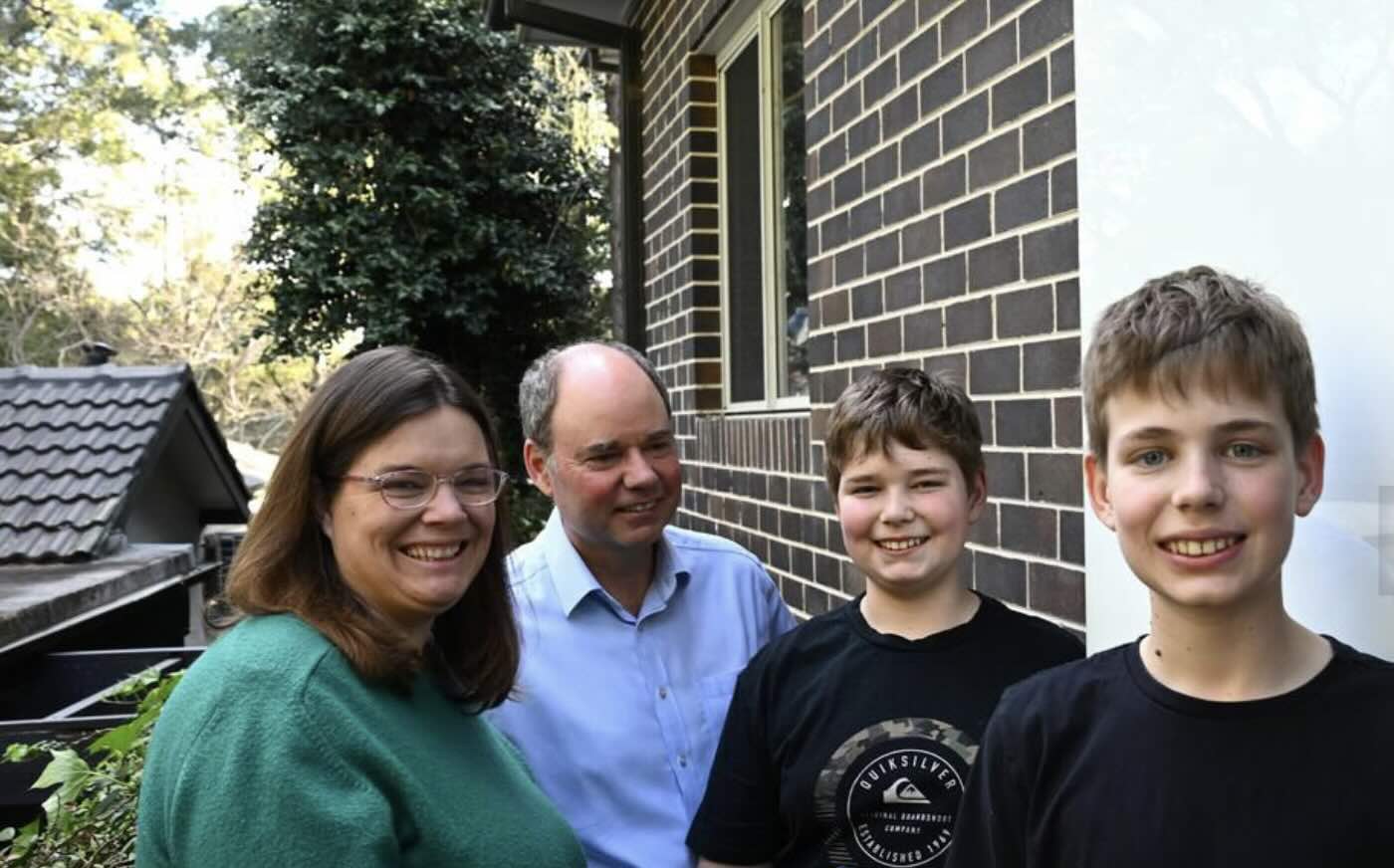

The Spencer family are the first Australian household to install a Tesla Powerwall 3 solar battery. (Dan Himbrechts/AAP PHOTOS)
Sydney consultant Greg Spencer had been weighing up whether to install a next-generation solar battery when his energy provider warned him about a 12-hour power outage.
The warning felt like a sign and motivated his four-person household to become the first in Australia to install a Tesla Powerwall 3.
“It solves my concern about protecting my family from power outages but also helps my goal to have a light footprint on the planet,” he said.
Energy experts say more Australian households are looking to install their own power storage, not just to save money or the environment, but also to ensure they avoid blackouts.
The trend also comes as more Australians add solar panels to their roofs, with almost four million now generating renewable energy.
For Mr Spencer, the final trigger for a solar battery upgrade came at an opportune time.
The family uses two electric vehicles, is having a heated pool installed and he had been reading about the third version of Tesla’s home battery.
“We’re probably spending about $5000 a year on power at the moment and we’re expecting that to disappear,” he said.
“The full system, which included removing old panels … was about $28,000 so it’s not a small investment but it pays for itself in not that many years.”
Tesla’s Powerwall 3 battery, announced on August 16, has the same energy storage of the last model, at 13.5 kilowatt hours, but more than doubles its power output to 11.5kWh.
The boost, Natural Solar chief executive Chris Williams said, should be enough to keep the lights on and the appliances working in most households during a blackout.
“In simple terms, if the grid goes down, which we’re seeing a lot more today than we have historically, and you need to call on the battery for backup power in the home, it should be able to power an entire house,” he said.
“It really is a game-changer.”
Mr Williams said blackouts were fuelling the trend to adopt household energy storage in Australia, with energy issues often triggering an influx in inquiries from affected households.
But he said greater power output and improved battery chemistry, such as lithium-ion phosphate, that promised to be safer and last longer, would also encourage more households to invest in energy storage, particularly if they already had solar panels installed.
“Australians have had such an early adopter mentality to solar and we’ve started to see that transition to batteries,” he said.
“There are almost four million homes in Australia that have solar but there are only a couple of hundred thousand homes with batteries at the moment.”
More than 3.7 million homes have solar panels installed in Australia, according to the Clean Energy Regulator, and some states offer incentives to install household batteries to store energy from them.
The NSW government will launch battery subsidies of between $1600 and $2400 in November, while the Victorian government offers interest-free loans for their installation of up to $8800.
AAP
This post was published on August 28, 2024 7:10 am
Report warns excluding cooktops from residential gas phase-out could take a big bite out of…
US energy economist says we have got our electricity tariffs all wrong, by focusing almost…
Wayne Smith from the Smart Energy Council on what to expect from the federal home…
OpenSolar joins forces with LoanOptions.ai to help consumers access finance to invest in rooftop PV…
Both major political parties are being urged to cut the price of household solar batteries…
Solar expansion project at major Australian airport takes it past its target to self-generate 15%…